This month marks 100 years since the 19th Amendment became law. With @USNatArchives and @librarycongress, we& #39;re counting down #19SuffrageStories  https://abs.twimg.com/hashflags... draggable="false" alt=""> of women who worked for the vote—before and after 1920—through the Aug. 26 anniversary. #BecauseOfHerStory https://s.si.edu/2Dg3n3p ">https://s.si.edu/2Dg3n3p&q...
https://abs.twimg.com/hashflags... draggable="false" alt=""> of women who worked for the vote—before and after 1920—through the Aug. 26 anniversary. #BecauseOfHerStory https://s.si.edu/2Dg3n3p ">https://s.si.edu/2Dg3n3p&q...
The #19thAmendment  https://abs.twimg.com/hashflags... draggable="false" alt=""> said women could not be excluded from the polls because of their sex, but it did not guarantee the ballot. Citizenship laws, poll taxes, threats and violence barred African American, Latina, Native American, Asian American, immigrant, and poor women.
https://abs.twimg.com/hashflags... draggable="false" alt=""> said women could not be excluded from the polls because of their sex, but it did not guarantee the ballot. Citizenship laws, poll taxes, threats and violence barred African American, Latina, Native American, Asian American, immigrant, and poor women.
In 1962, Fannie Lou Hamer was one of 18 African Americans who traveled 26 miles to register to vote at a Mississippi courthouse. The 19th Amendment had not removed racist Jim Crow laws, and the group was told they& #39;d need to take a literacy test. #19SuffrageStories  https://abs.twimg.com/hashflags... draggable="false" alt="">
https://abs.twimg.com/hashflags... draggable="false" alt="">
Hamer described the circumstances African Americans were continuing to face at the polls in televised testimony as part of the 1964 Democratic National Convention. Her speech galvanized support for the 1965 Voting Rights Act. This poster is in our @amhistorymuseum.
In 1917, Adelina “Nina” Otero-Warren was tapped to head New Mexico& #39;s chapter of the Congressional Union by Alice Paul, a leading suffragist. Otero-Warren garnered support for suffrage in Spanish and English-speaking communities, insisting materials be published in both languages.
At age 16, Mabel Ping-Hua Lee led a 1912 suffrage parade in New York City. Born in China, she began writing and speaking about the cause as a teen. Due to Chinese Exclusion laws, she was barred from becoming a U.S. citizen and voting after the #19thAmendment  https://abs.twimg.com/hashflags... draggable="false" alt="">. #19SuffrageStories
https://abs.twimg.com/hashflags... draggable="false" alt="">. #19SuffrageStories  https://abs.twimg.com/hashflags... draggable="false" alt="">
https://abs.twimg.com/hashflags... draggable="false" alt="">
In 1915, Daisy Elizabeth Adams Lampkin—who dedicated her life to women’s and civil rights—became president of the Lucy Stone Woman Suffrage League.  https://abs.twimg.com/emoji/v2/... draggable="false" alt="📸" title="Kamera mit Blitz" aria-label="Emoji: Kamera mit Blitz">: Lampkin at a 1947 NAACP Civil Rights Convention, @NMAAHC, Gift of Joe Schwartz and Family, © Joe Schwartz #19SuffrageStories
https://abs.twimg.com/emoji/v2/... draggable="false" alt="📸" title="Kamera mit Blitz" aria-label="Emoji: Kamera mit Blitz">: Lampkin at a 1947 NAACP Civil Rights Convention, @NMAAHC, Gift of Joe Schwartz and Family, © Joe Schwartz #19SuffrageStories  https://abs.twimg.com/hashflags... draggable="false" alt="">
https://abs.twimg.com/hashflags... draggable="false" alt="">
Susan B. Anthony and 14 other women were arrested for voting in an 1872 election in Rochester, New York. Anthony was convicted and sentenced to pay a $100 fine and court costs, which she never paid. The indictment is in @USNatArchives. #19SuffrageStories  https://abs.twimg.com/hashflags... draggable="false" alt="">
https://abs.twimg.com/hashflags... draggable="false" alt="">
In 1913, Nellie Quander, president of Alpha Kappa Alpha—the nation’s oldest Black sorority—wrote to the chair of an upcoming D.C. suffrage parade. "We do not wish to enter if we must meet with discrimination," Quander wrote in this letter in @librarycongress. #19SuffrageStories  https://abs.twimg.com/hashflags... draggable="false" alt="">
https://abs.twimg.com/hashflags... draggable="false" alt="">
Planners questioned allowing African American women to participate or segregating the parade. Accounts of what happened differ. Some women of color—journalist Ida B. Wells and lawyer Marie Louise Bottineau Baldwin (Turtle Mountain Band of Chippewa)—walked alongside white women.
At the 1848 Seneca Falls Convention—the nation& #39;s first for women& #39;s rights—Elizabeth Cady Stanton read a “Declaration of Sentiments” with 12 resolutions for women& #39;s equality, including suffrage. This printed version is from Frederick Douglass’ newspaper The North Star.
In 1911, women in California were guaranteed their right to vote. As the movement gained traction from West to East, Henry Mayer’s 1915 illustration “The Awakening,” now in @librarycongress, was a symbol for women still fighting for their right to vote. #19SuffrageStories  https://abs.twimg.com/hashflags... draggable="false" alt="">
https://abs.twimg.com/hashflags... draggable="false" alt="">

 Read on Twitter
Read on Twitter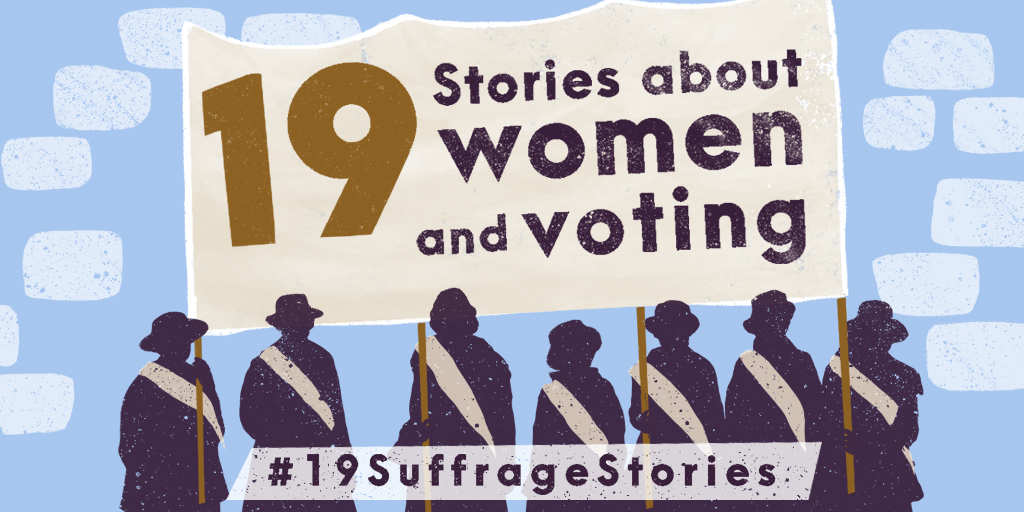 of women who worked for the vote—before and after 1920—through the Aug. 26 anniversary. #BecauseOfHerStory https://s.si.edu/2Dg3n3p&q..." title="This month marks 100 years since the 19th Amendment became law. With @USNatArchives and @librarycongress, we& #39;re counting down #19SuffrageStories https://abs.twimg.com/hashflags... draggable="false" alt=""> of women who worked for the vote—before and after 1920—through the Aug. 26 anniversary. #BecauseOfHerStory https://s.si.edu/2Dg3n3p&q..." class="img-responsive" style="max-width:100%;"/>
of women who worked for the vote—before and after 1920—through the Aug. 26 anniversary. #BecauseOfHerStory https://s.si.edu/2Dg3n3p&q..." title="This month marks 100 years since the 19th Amendment became law. With @USNatArchives and @librarycongress, we& #39;re counting down #19SuffrageStories https://abs.twimg.com/hashflags... draggable="false" alt=""> of women who worked for the vote—before and after 1920—through the Aug. 26 anniversary. #BecauseOfHerStory https://s.si.edu/2Dg3n3p&q..." class="img-responsive" style="max-width:100%;"/>
 said women could not be excluded from the polls because of their sex, but it did not guarantee the ballot. Citizenship laws, poll taxes, threats and violence barred African American, Latina, Native American, Asian American, immigrant, and poor women." title="The #19thAmendment https://abs.twimg.com/hashflags... draggable="false" alt=""> said women could not be excluded from the polls because of their sex, but it did not guarantee the ballot. Citizenship laws, poll taxes, threats and violence barred African American, Latina, Native American, Asian American, immigrant, and poor women." class="img-responsive" style="max-width:100%;"/>
said women could not be excluded from the polls because of their sex, but it did not guarantee the ballot. Citizenship laws, poll taxes, threats and violence barred African American, Latina, Native American, Asian American, immigrant, and poor women." title="The #19thAmendment https://abs.twimg.com/hashflags... draggable="false" alt=""> said women could not be excluded from the polls because of their sex, but it did not guarantee the ballot. Citizenship laws, poll taxes, threats and violence barred African American, Latina, Native American, Asian American, immigrant, and poor women." class="img-responsive" style="max-width:100%;"/>
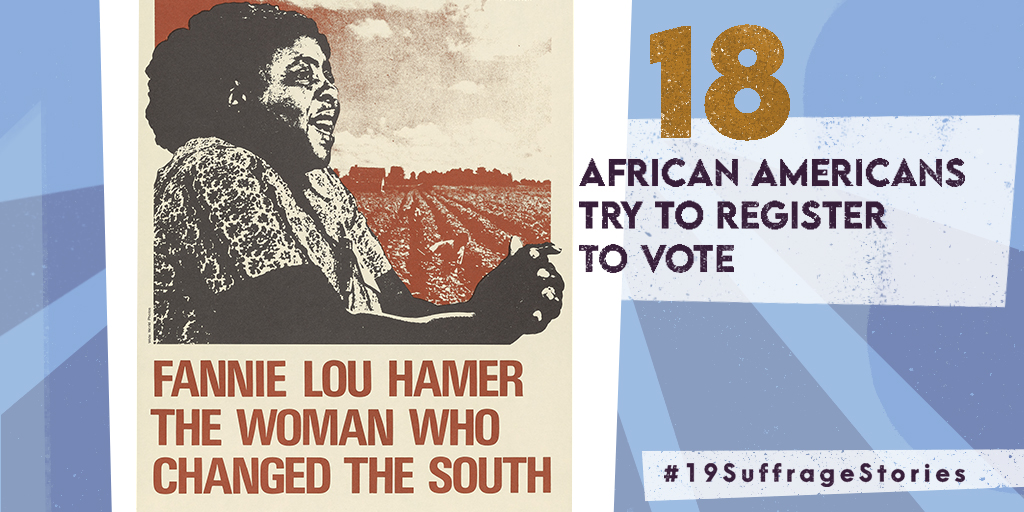 " title="In 1962, Fannie Lou Hamer was one of 18 African Americans who traveled 26 miles to register to vote at a Mississippi courthouse. The 19th Amendment had not removed racist Jim Crow laws, and the group was told they& #39;d need to take a literacy test. #19SuffrageStories https://abs.twimg.com/hashflags... draggable="false" alt="">" class="img-responsive" style="max-width:100%;"/>
" title="In 1962, Fannie Lou Hamer was one of 18 African Americans who traveled 26 miles to register to vote at a Mississippi courthouse. The 19th Amendment had not removed racist Jim Crow laws, and the group was told they& #39;d need to take a literacy test. #19SuffrageStories https://abs.twimg.com/hashflags... draggable="false" alt="">" class="img-responsive" style="max-width:100%;"/>
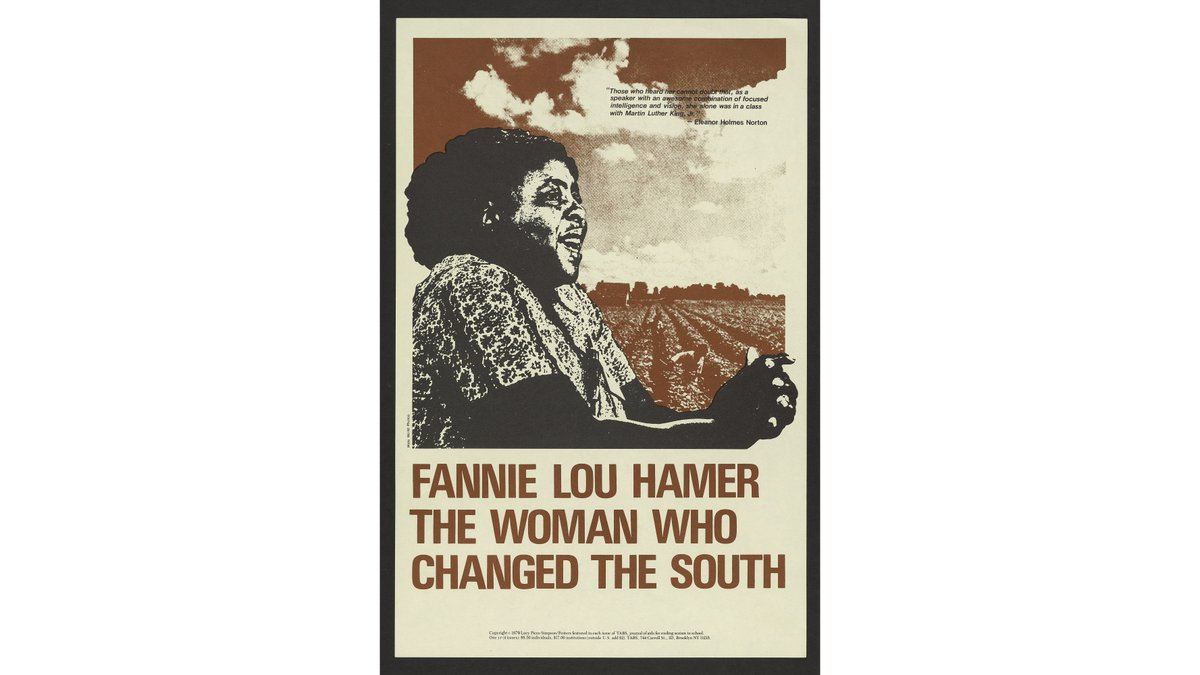
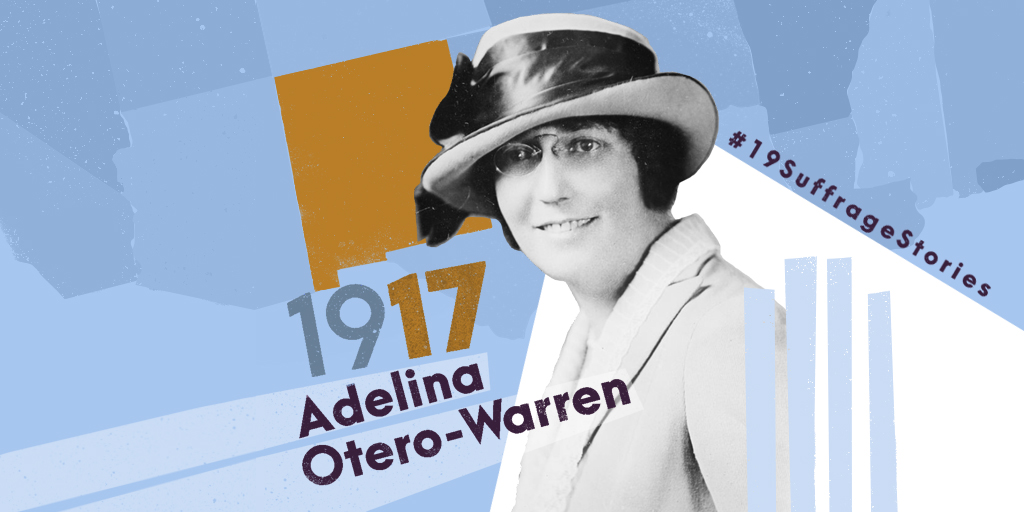
 . #19SuffrageStories https://abs.twimg.com/hashflags... draggable="false" alt="">" title="At age 16, Mabel Ping-Hua Lee led a 1912 suffrage parade in New York City. Born in China, she began writing and speaking about the cause as a teen. Due to Chinese Exclusion laws, she was barred from becoming a U.S. citizen and voting after the #19thAmendment https://abs.twimg.com/hashflags... draggable="false" alt="">. #19SuffrageStories https://abs.twimg.com/hashflags... draggable="false" alt="">" class="img-responsive" style="max-width:100%;"/>
. #19SuffrageStories https://abs.twimg.com/hashflags... draggable="false" alt="">" title="At age 16, Mabel Ping-Hua Lee led a 1912 suffrage parade in New York City. Born in China, she began writing and speaking about the cause as a teen. Due to Chinese Exclusion laws, she was barred from becoming a U.S. citizen and voting after the #19thAmendment https://abs.twimg.com/hashflags... draggable="false" alt="">. #19SuffrageStories https://abs.twimg.com/hashflags... draggable="false" alt="">" class="img-responsive" style="max-width:100%;"/>
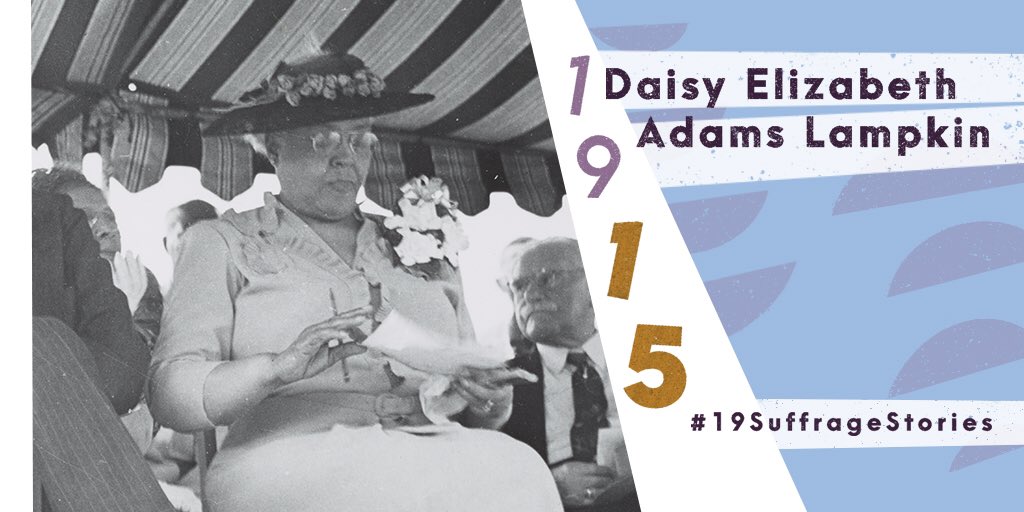 : Lampkin at a 1947 NAACP Civil Rights Convention, @NMAAHC, Gift of Joe Schwartz and Family, © Joe Schwartz #19SuffrageStories https://abs.twimg.com/hashflags... draggable="false" alt="">" title="In 1915, Daisy Elizabeth Adams Lampkin—who dedicated her life to women’s and civil rights—became president of the Lucy Stone Woman Suffrage League. https://abs.twimg.com/emoji/v2/... draggable="false" alt="📸" title="Kamera mit Blitz" aria-label="Emoji: Kamera mit Blitz">: Lampkin at a 1947 NAACP Civil Rights Convention, @NMAAHC, Gift of Joe Schwartz and Family, © Joe Schwartz #19SuffrageStories https://abs.twimg.com/hashflags... draggable="false" alt="">" class="img-responsive" style="max-width:100%;"/>
: Lampkin at a 1947 NAACP Civil Rights Convention, @NMAAHC, Gift of Joe Schwartz and Family, © Joe Schwartz #19SuffrageStories https://abs.twimg.com/hashflags... draggable="false" alt="">" title="In 1915, Daisy Elizabeth Adams Lampkin—who dedicated her life to women’s and civil rights—became president of the Lucy Stone Woman Suffrage League. https://abs.twimg.com/emoji/v2/... draggable="false" alt="📸" title="Kamera mit Blitz" aria-label="Emoji: Kamera mit Blitz">: Lampkin at a 1947 NAACP Civil Rights Convention, @NMAAHC, Gift of Joe Schwartz and Family, © Joe Schwartz #19SuffrageStories https://abs.twimg.com/hashflags... draggable="false" alt="">" class="img-responsive" style="max-width:100%;"/>
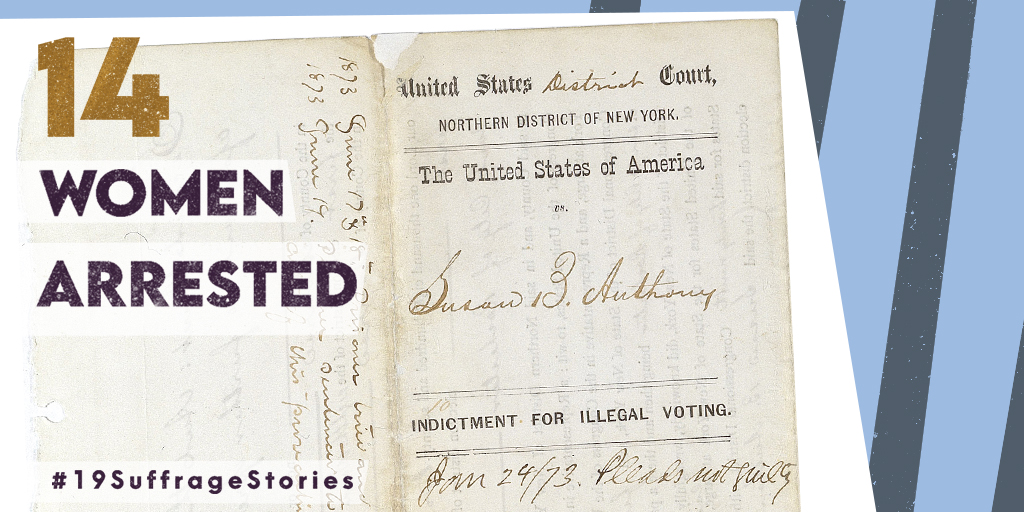 " title="Susan B. Anthony and 14 other women were arrested for voting in an 1872 election in Rochester, New York. Anthony was convicted and sentenced to pay a $100 fine and court costs, which she never paid. The indictment is in @USNatArchives. #19SuffrageStories https://abs.twimg.com/hashflags... draggable="false" alt="">" class="img-responsive" style="max-width:100%;"/>
" title="Susan B. Anthony and 14 other women were arrested for voting in an 1872 election in Rochester, New York. Anthony was convicted and sentenced to pay a $100 fine and court costs, which she never paid. The indictment is in @USNatArchives. #19SuffrageStories https://abs.twimg.com/hashflags... draggable="false" alt="">" class="img-responsive" style="max-width:100%;"/>
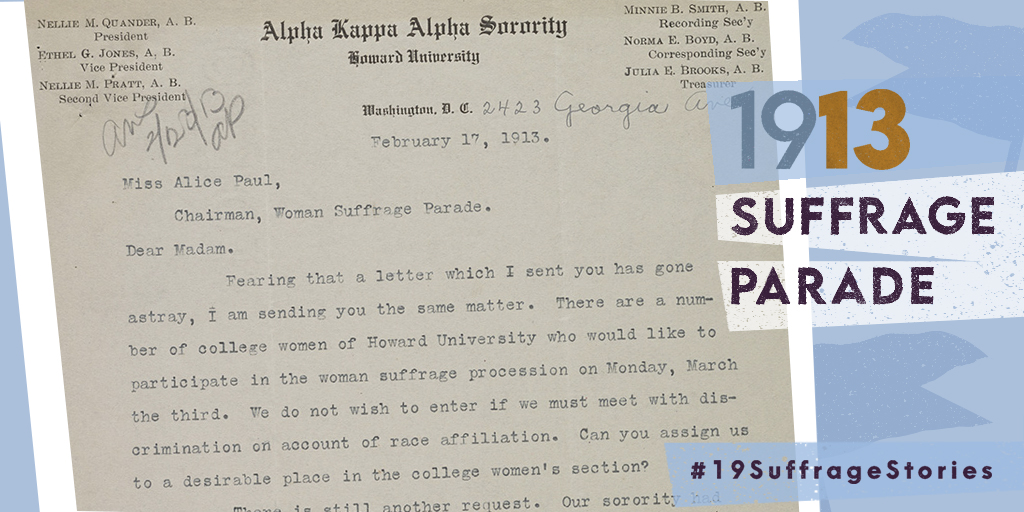 " title="In 1913, Nellie Quander, president of Alpha Kappa Alpha—the nation’s oldest Black sorority—wrote to the chair of an upcoming D.C. suffrage parade. "We do not wish to enter if we must meet with discrimination," Quander wrote in this letter in @librarycongress. #19SuffrageStories https://abs.twimg.com/hashflags... draggable="false" alt="">" class="img-responsive" style="max-width:100%;"/>
" title="In 1913, Nellie Quander, president of Alpha Kappa Alpha—the nation’s oldest Black sorority—wrote to the chair of an upcoming D.C. suffrage parade. "We do not wish to enter if we must meet with discrimination," Quander wrote in this letter in @librarycongress. #19SuffrageStories https://abs.twimg.com/hashflags... draggable="false" alt="">" class="img-responsive" style="max-width:100%;"/>
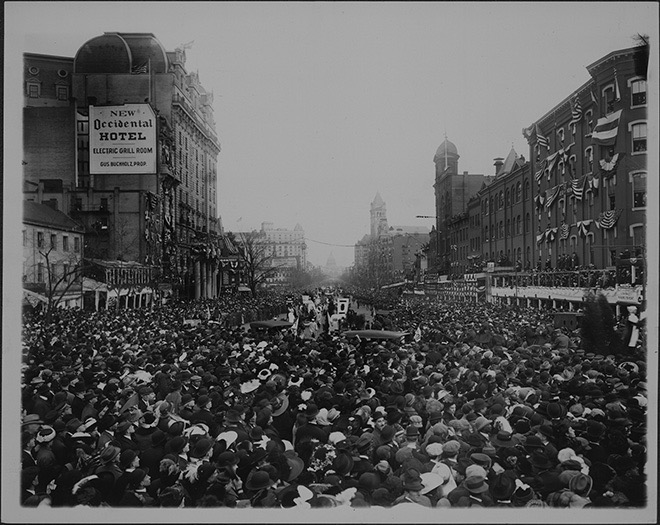

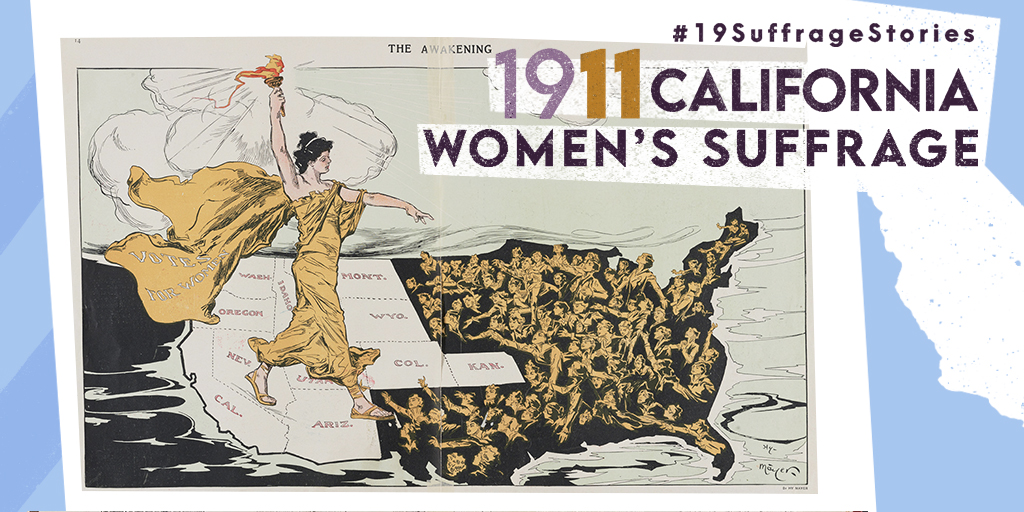 " title="In 1911, women in California were guaranteed their right to vote. As the movement gained traction from West to East, Henry Mayer’s 1915 illustration “The Awakening,” now in @librarycongress, was a symbol for women still fighting for their right to vote. #19SuffrageStories https://abs.twimg.com/hashflags... draggable="false" alt="">" class="img-responsive" style="max-width:100%;"/>
" title="In 1911, women in California were guaranteed their right to vote. As the movement gained traction from West to East, Henry Mayer’s 1915 illustration “The Awakening,” now in @librarycongress, was a symbol for women still fighting for their right to vote. #19SuffrageStories https://abs.twimg.com/hashflags... draggable="false" alt="">" class="img-responsive" style="max-width:100%;"/>


